Laser Photobiomodulation of Wound Healing: A Review of Experimental Studies in Mouse and Rat Animal Models
Conclusion: Studies reviewed consistently demonstrated the ability of laser or monochromatic light to photobiomodulate wound healing processes in experimental wounds in rats and mice, and strongly support the case for further controlled research in humans.
OPEN FILEAdditive enhancement of wound healing in diabetic mice by low level light and topical CoQ10
The accelerated healing was corroborated by at least 50% higher hydroxyproline levels, and tripling cell proliferation rates in LLLT and CoQ10 treated wounds over controls. The beneficial effects on wound healing were probably attributed to additive enhancement of ATP production by LLLT and CoQ10 treatment. The combination of LLLT and topical CoQ10 is safe and convenient, and merits further clinical study.
OPEN FILEWound Healing of Animal and Human Body Sport and Traffic Accident Injuries Using Low-Level Laser Therapy Treatment: A Randomized Clinical Study of Seventy-Four Patients with Control Group
Conclusion: In addition to accelerated wound healing, the main advantages of LLLT for postoperative sport- and traffic-related injuries include prevention of side effects of drugs, significantly accelerated functional recovery, earlier return to work, training and sport competition compared to the control group of patients, and cost benefit.
OPEN FILESystematic review of photobiomodulation for the management of oral mucositis in cancer patients and clinical practice guidelines
Conclusions The evidence supports the use of specific settings of PBM therapy for the prevention of OM in specific patient populations. Under these circumstances, PBM is recommended for the prevention of OM. The guidelines are subject to continuous update based on new published data.
OPEN FILEAcneiform rash due to epidermal growth factor receptor inhibitors- high-level laser therapy as an innovative approach
This is the first report in which the possibility of a complete regression and healing of cetuximab-induced AR can be obtained using HLLT treatment. Since laser applications are completely safe, non-invasive, quick, and easy, without contraindications and limited side-effects, they can be routinely used in the treatment of this dermatitis.
OPEN FILEBeneficial Effects of Applying Low-Level Laser Therapy to Surgical Wounds After Bariatric Surgery
LLLT applied with the described protocol led to a decrease by biochemical markers and wound temperature compared with the placebo, which indicated that LLLT was able to control the inflammatory process; in addition, seroma and pain were reduced and cicatrization was improved by this preventive procedure.
OPEN FILELaser Photobiomodulation Models and Mechanisms - Arany
The aim of this article is to provide an overview of the various known biological mechanisms in LLLT and highlight the discovery of a recent mechanism describing LLLT-mediated activation of a latent growth factor complex, latent transforming growth factor-?1 (LTGF-?1) in stimulating oral wound healing.
OPEN FILEPhotobiomodulation in Dermatology- Harnessing Light from Visible to Near Infrared for Medical and Aesthetic Purposes
PBM has shown benefits in the treatment of acne and the prevention / treatment of hypertrophic scars. It has shown promise in skin rejuvenation, the treatment of alopecia, cellulite, as well as other skin diseases. The discovery of new applications for PBM, already an effective form of treatment and prevention for many skin conditions, is continually expanding.
OPEN FILELow Level Laser (Light) Therapy (LLLT) for Cosmetic Medicine and Dermatology
Low-level light therapy (LLLT) is a novel treatment option available for non-thermal and non-ablative skin rejuvenation, which has been shown to be effective for improving skin conditions such as wrinkles and skin laxity.
OPEN FILELow-level laser (light) therapy (LLLT) in skin- stimulating healing restoring
Inflammatory diseases such as psoriasis and acne can also benefit. The non-invasive nature and almost complete absence of side-effects encourages further testing in dermatology.
OPEN FILE